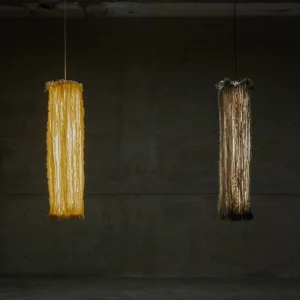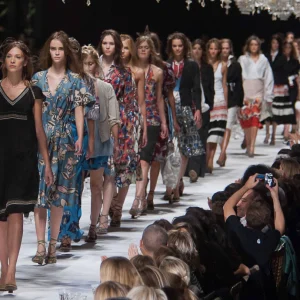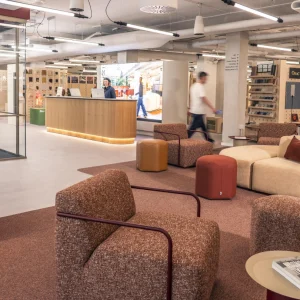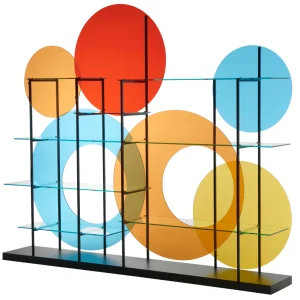A solo exhibition of international artist Zineb Sedira’s video installations marks the first commissioned work by Nottingham’s New Art Exchange. A series of three short films explores issues of migration, memory, loss, and transience, with a focus on the sea as a site for both opportunity and despair. The bright and generous exhibition spaces of HawkinsBrown’s elegant new building are blacked out and transformed to multimedia galleries, with each film occupying one room carved out of the multifunctional spaces.
The major new work, which lends the exhibition its title, is shown in the largest space. Floating Coffins documents the wasted coastline of the harbour city of Nouadhibou, Mauritania, which has recently become a favoured point of departure for African migrants hoping to reach Europe, as well as being the site of the world’s largest shipping graveyard. Sedira’s film exposes the parallels between these extraordinary conditions, as the rotting hulks of ships in various stages of decay are interspersed by tiny figures slowly moving between them, removing bits of scrap in an attempt to sustain a life in this blasted landscape. Each of the 14 variously sized screens shows a different view or timeframe, allowing the visitor to slowly build up an understanding of this poetically charged place. “Floating Coffins is a space where life, death, loss, escape, abandoned and shipwrecked journeys meet. It’s both a toxic graveyard and a source of survival and hope” (Zineb Sedira).
These themes are perfectly captured in the innovative visual presentation, which is complemented by a sound installation by Mikhail Karikis, combining recordings from the video with especially composed sounds. The surreal beauty of the powerfully shot film sequences combined with the soundscape is deeply affecting; “haunting” is a cliché often repeated in the gallery’s visitors’ book, but a highly apt cliché.
Saphir (2006) and MiddleSea (2008) complete the exhibition. Both focus on Sedira’s national countries (she was born in France to Algerian immigrant parents), and the Mediterranean sea which connects them. Both have an autobiographical dimension not present in Floating Coffins, and both also feature actors where the first does not. Saphir presents the split-screen story of two Algerians; a man who remains outside a rundown art deco hotel peering out to sea, and a woman who remains inside the same hotel. The piece explores differing attitudes to Algiers, contrasting pleasure with misery, joy of arrival with a longing to depart.MiddleSea connects to themes set up in Saphir, as the camera tracks a lone man on a ghost ship sailing towards France. The shifting and unstable nature of the sea is the main topic here, a non-place dividing life from life, and holding migrants in a state of powerless flux.
These works are beautifully composed and paced, never becoming frustrating or inconsequential as too many video artworks can. But they would be better arranged as a chronological progression leading up to the excellent Floating Coffins: that film is a compelling opener, but would make an even better finale. Such a small criticism aside, the exhibition represents a very significant milestone for this young and enthusiastic organisation, and points to a bright future for Nottingham’s expanding art scene.
Floating Coffins by Zineb Sedira: Sat 7 February to Sun 19 April 2009
at New Art Exchange Nottingham, 39-41 Gregory Boulevard NG7










